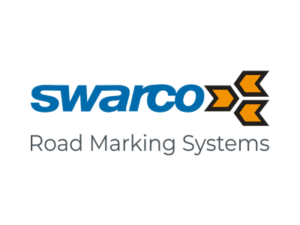On the Digitrans proving ground for autonomous driving in St. Valentin, the Chair of Sustainable Transport Logistics 4.0 at Johannes Kepler University Linz and a team of experts from SWARCO Road Marking Systems were able to perform the first successful tests for detecting road markings.
The Digitrans proving ground in St. Valentin, on the area of the Magna Powertrain Engineering Center Steyr, is at the center of intense research on autonomous driving.
Together with researchers at the Chair of Sustainable Transport Logistics 4.0 at JKU Linz, a team of experts from SWARCO Road Marking Systems has now completed a study on the detectability of marking systems.
A LiDAR system and a camera were used in the test scenarios in St. Valentin. The fully automated test vehicle of the Johannes Keppler University Linz was able to detect the lane markings on the test track with the help of these LiDAR and camera systems, already in the first test series and keep in lane without any problems.
Fully automated test vehicle from JKU Linz on the Digitrans proving ground in St. Valentin
In addition to many renowned companies, scientists from the “Sustainable Transport Logistics 4.0” department at Johannes Kepler University Linz are also involved in research and testing at Digitrans in St. Valentin. With a specially developed, fully autonomous test vehicle and using a camera, the open source software “OpenPilot” and a LiDAR system, they recently tested the detectability of the standard markings on the proving ground in St. Valentin.
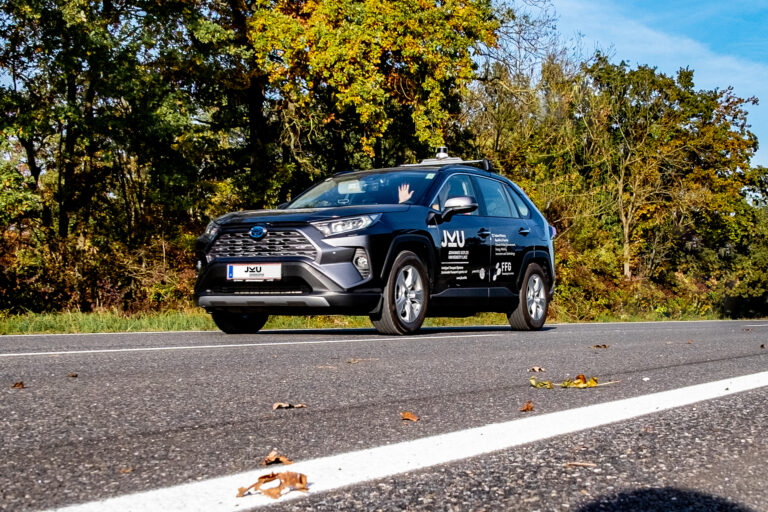
The automated test vehicle of the chair “Sustainable Transport Logistics 4.0” of the Johannes Kepler University Linz on the Digitrans proving ground in St. Valentin. © DigiTrans GmbH
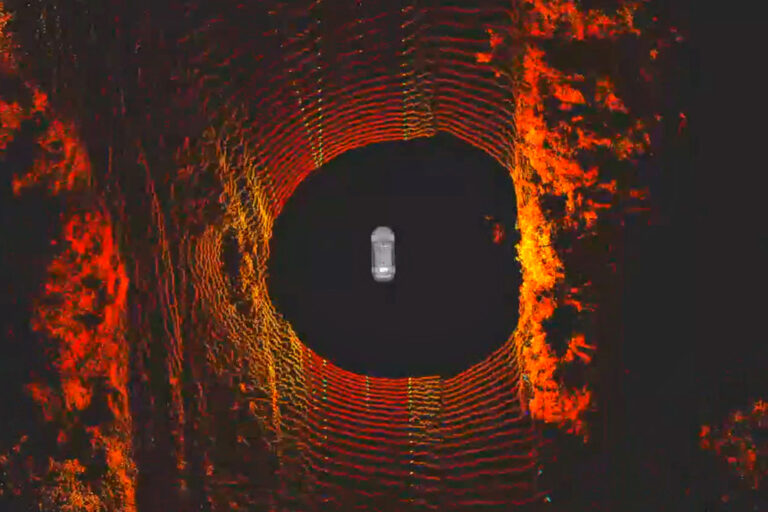
The study tested LiDAR and cameras to dedect the environment, possible obstacles and especially road markings. © Chair of Sustainable Transport Logistics 4.0 Johannes Kepler University Linz
Automated assistance systems use these markings for orientation on the road. “We wanted to know exactly whether the sensors detected the markings or not. The result was absolutely clear: the markings were detected, which meant that our vehicle was able to navigate the roads without any problems,” explains Univ.-Prof. Dr. Cristina Olaverri-Monreal, head of the Chair of Sustainable Transport Logistics 4.0 at JKU, and adds: “Our test vehicle drove entirely without any steering intervention from the outside. We only controlled the speeds using cruise control. Speeds of up to 55 km/h were tested.
In addition to the camera, the LiDAR tested was also able to detect all the markings.” LiDAR (Light Detection and Ranging) is a technology similar to radar that uses laser beams to measure the position and speed of objects. This is why it is essential that in the LiDAR wavelength, too, markings demonstrate optimal visibility.
“Our goal is to further optimize how sensors, and road and marking detection interact and work together. This is the basis for developing our products further and establishing new standards, especially for the harmonization of road markings in Europe”
Friedrich Wiesinger/ Team Leader Product Development SWARCO Road Marking Systems

Perfect conditions for LiDAR tests on the Digitrans proving ground in St. Valentin
“During the test drives, the weather and conditions were optimal, leading to good results. We’re now even more curious to see what will happen in future test series,” says Friedrich Wiesinger. Additional test scenarios will therefore be planned soon to clarify how well cameras and LiDAR can detect individual markings and their contrast with the road.
These will then be carried out in a wide range of weather conditions such as snow, rain or fog. Digitrans is currently setting up an outdoor rain plant at the proving ground in St. Valentin in order to be able to artificially generate natural rainfall. This will enable reproducible tests at different rain intensities at the push of a button.
Test ride of the research vehicle of the chair “Sustainable Transport Logistics 4.0” of the Johannes Kepler University Linz on the Digitrans proving ground in St. Valentin. © Chair Sustainable Transport Logistics 4.0, Johannes Kepler University Linz / DigiTrans GmbH
Continue to boost research and testing of autonomous vehicles
Automated driving and autonomous transport solutions will be able to make an important contribution to sustainable and safe mobility concepts in the future. However, a lot of research is needed before cars, shuttles, or transport vehicles can actually operate entirely without the intervention of a human driver,” explains Friedrich Wiesinger, Team Leader Product Development at SWARCO Road Marking Systems.
Some of these are being carried out at the Digitrans proving ground in St. Valentin in Lower Austria. These tests are among the most extensive practical tests of semi-autonomous systems currently available across our company. SWARCO Road Marking Systems acts as Digitrans’ exclusive road marking system partner.
About SWARCO Road Marking Systems
What began in 1969 with small reflective glass beads has grown to become the world’s largest system provider for road markings. SWARCO systems and solutions save lives every day: SWARCO Road Marking Systems quality products and services guide traffic safely from A to B by day and especially by night. On all roads. In any weather. From a single source. More than 5,000 customers in more than 80 countries rely on it.
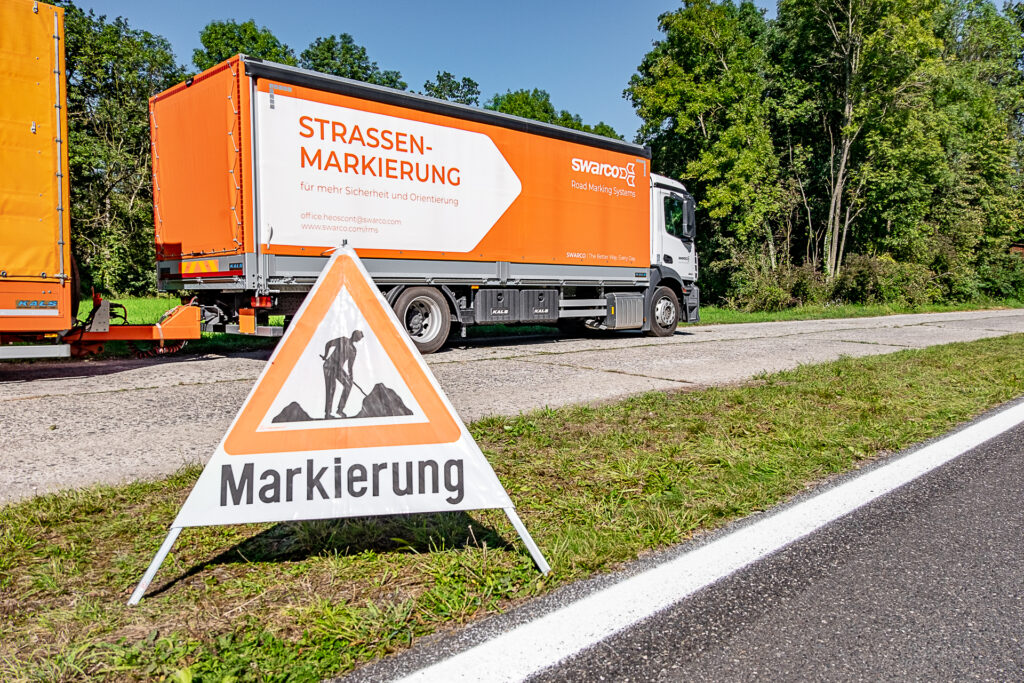
© DigTrans GmbH 2021
SWARCO Road Marking Systems bundles its know-how and innovative strength in the Competence Center for Glass Technology and Marking Systems to continue to lead the way in road marking for the global market in the age of Smart Driving and Autonomous Driving.
You might also be interested in
Further Insights

Trustworthiness of AI – The Critical Success Factor for Automated Driving
In the project “AI Trustworthiness & Automated Driving”, the Automotive Cluster (AC) of the Business Upper Austria location agency, DigiTrans GmbH, RISC Software GmbH and Software Competence Center Hagenberg GmbH (SCCH) have developed a roadmap for Upper Austria as a business location.
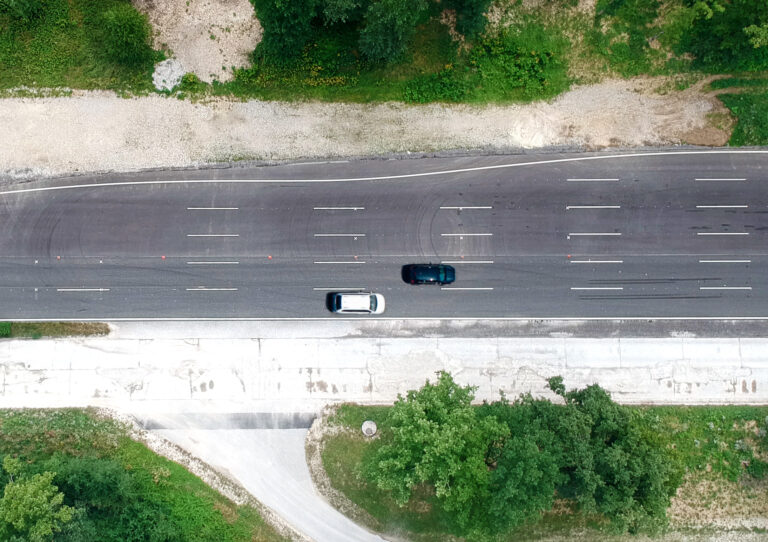
Tests of driver assistance systems at the Digitrans Test Center on the proving ground in St. Valentin
On August 9, application-based practical tests with driver assistance systems were carried out at the Digitrans Test Center in St. Valentin on behalf of AustriaTech in cooperation with Graz University of Technology and Factum as part of the research project “Road Safety and Automated Mobility M7174”.

Limitless – 205 km/h with RC model cars on the proving ground in St. Valentin
Two model racers test the limits of their RC model cars – reaching speeds of up to 205 km/h during a speed test at the Digitrans test center on the proving ground in St. Valentin.

